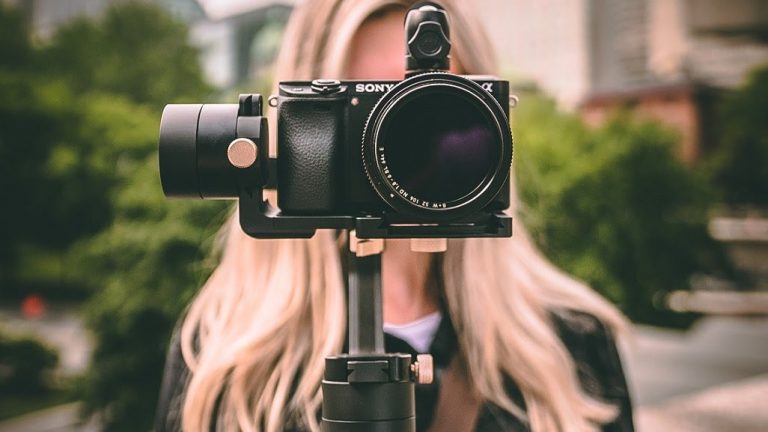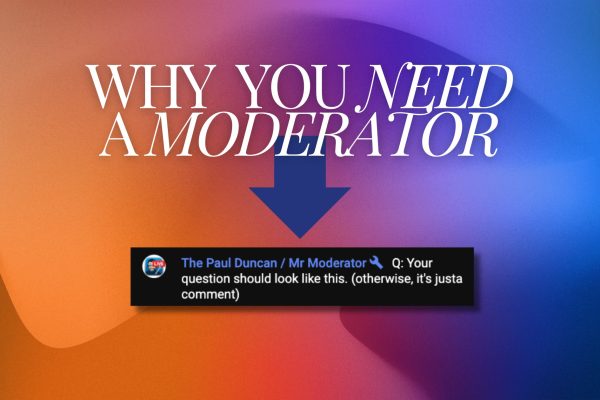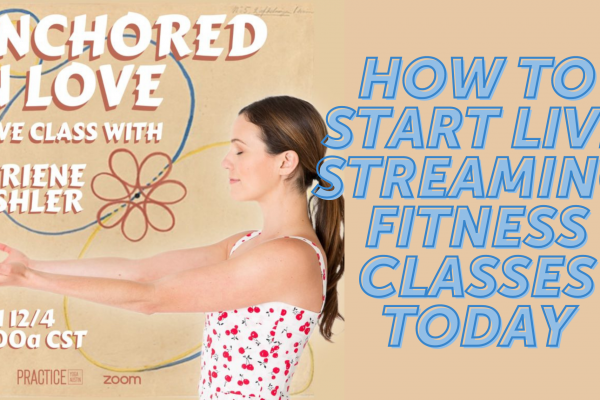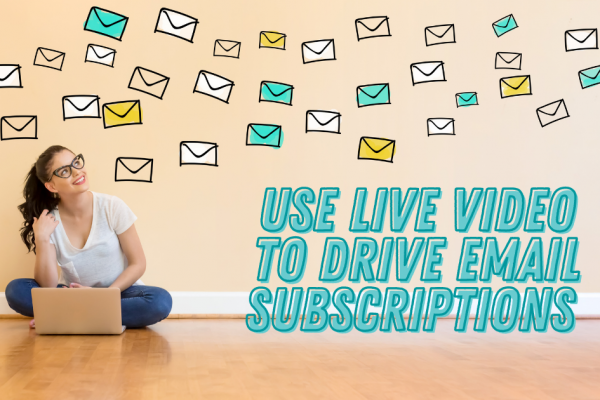In 2020, the live streaming industry increased by 99%. Impressive, right? No wonder that every social media platform provides the opportunity for users to go live. It helps these users share content with the world. In 2021, most brands have already noticed this trend. They’re using live shows to reach and engage their target audience through storytelling.
And rightly so:
According to the live streaming statistics gathered by 99firms, “80% of consumers would rather watch a live video than read a blog.” Sure, it’s probably not true for SEO-focused content, like blogs. But news, trends, how-tos, and any brand-related topic discussions are better to share via video created with video production and live streaming apps like Ecamm Live.
The reasons?
- Live shows are more timely and eye-catching. The audience will get your message immediately and has the opportunity to interact and engage.
- Live videos are less time- and resource-consuming for marketers. While it takes hours to research, write, publish, and promote a blog post, streams take seconds to set up and provide tons of dynamic content that you can repurpose in a plethora of ways.
- Videos provide more context; they are more conversational and engaging. Storytelling elements like inflection and body language are impossible to communicate with text.
In this article, you’ll find out how to get the most out of storytelling techniques when it comes to video streaming. Let’s see what storytelling elements can go into place when you have no opportunity to pre-edit and pre-caption content but want it to engage and convert.
Why Storytelling in Videos?
Long story short: Storytelling is the only way to make people want to listen to you and remember you among others. Nothing personal; it’s just psychology and how the human brain works.
Source: OneSpot
The brain retains 70% of information through stories and only 10% — from data and statistics. That’s because a story activates the part of your brain responsible for experiences, and that’s why people use feelings rather than facts to evaluate brands. Those feelings influence a consumer’s loyalty and intention to buy from a brand.
Also, storytelling appeals to cognitive psychology. When using core principles of human memory, thinking, and perception in stories, we evoke a positive response from the audience.
Video is a naturally engaging format to tell a story because most people are visual learners, perceiving information through pictures, not words. Video storytelling is about guiding viewers through narrative-based content that appeals to their pain points, evokes emotional connections, and engages them in the desired action.
But how do you make storytelling work in your video live streams? Here are five hacks to hook viewers, make them watch you till the end, and motivate them to follow your call to action.
#1 – Give Them a Hero
Your live show will work if you keep focused on the three core elements that each story should have: set-up, narrative arc, and resolution. This technique comes from classic storytelling, and all fiction- and scriptwriters know it as the hero’s journey.
A hero leaves home for a journey to solve a problem, meets and overcomes challenges, and comes back home with a reward. (Isn’t that what every Hollywood blockbuster looks like?)
For your live stream story to win loyalty and trust, it needs to give the audience a hero they can relate to. If you stream on behalf of a brand, it can be your employee or customer: make that person a host or invite to host the live show with you. When building personal brand awareness, always do your best to become the story protagonist yourself.
When preparing for a live show, always write a rough script of what you are going to share. In live streaming, we call this the Run of Show. With a good Run of Show or video script, you’re always to create the best content. Try to build it with storytelling elements in mind. Create a solid narrative arc for the audience to follow, relate to, immerse with all the twists, and keep watching you to the end.
Bonus: You can use Ecamm Live’s Scenes feature to lay out your run of show or video script visually so that when it’s time to record or go live, you can simply click “next” to flow from one scene to the next.
Ensure it will be easy for the audience to associate themselves with you (the hero). For that, you need to understand their pain points, needs, emotions, fears, experiences, and cultural backgrounds.
#2 – Add the Element of Surprise
Do you know that people watch over a billion hours of YouTube videos a day? It’s more than Netflix and Facebook combined! No wonder our attention span gets shorter and shorter. Oversaturated with content, users are super picky and hard to hook today.
The good news is that attention span can evolve. To capture attention, try adding an element of surprise to your live show. In storytelling, we know this trick as a plot twist making the audience yell “Wow!” or “WTF?” and continue watching to find out what that is all about.
Example: A sudden death of Ned Stark in the first season of the Game of Thrones series.
In video storytelling, an element of surprise can be some random character, color, or anything else the audience doesn’t expect to see.
Another example: A purple cow in Milka’s ad or a panda in the advertisement of cheese.
When live streaming, try something surprising. Put something eye-catching in your background set, have a surprise guest call in, or plan a twist in your script — anything that will make the audience take a closer look and pay attention to what you’re saying.
The only rule here: These elements of surprise need to be unexpected, yet relevant to your brand or the topic of your live show.
“What makes that panda relevant in the above ad?” you may ask. Please take a closer look at that cheese name.
#3 – Make Context Speak for You
In storytelling, there’s one core principle: “Show, don’t tell.” The human brain thinks in terms of images, and that is why content creators use all possible instruments for their story to become a comprehensive composition in their consumers’ minds.
While writers use their vast toolkit of words, video storytelling has tons of alternative ways to communicate a message to the audience: colors, filters, background music (more on that below), and the overall environment you create in the shoot.
The most potent weapon here are colors and filters. We know about color psychology, with each color conveying a particular message and evoking specific associations. In live streaming, you won’t have a chance for further video editing; so, please do your best to organize your shoot environment in advance.
Source: Oberlo
With colors and filters, you can influence the audience’s mood. Use a dark and plain background — and you’ll evoke the feeling of loneliness or emptiness; choose bright, bold colors — and you’ll get hope and happiness.
NB! Consider your target audience before choosing a color scheme — their demographics, cultural background, and experience matters here.
#4 – Use the Power of Music
Music is a strong trigger, communicating different emotions to the audience. The right music on your live show can help create powerful emotional associations, making the audience link your information to the event in their own lives.
The music you choose will depend on your live stream’s topic and the mood you plan to create in your video story. It stands to reason that it’s not that reasonable to play some upbeat track during a live video conference, for example. But if some slow, reflective melody fits in with your plot, you can place it to play softly in the background.
Example: Expert live streamer, Luria Petrucci of Live Streaming Pros, always does a high-energy dance party to kick off her live stream broadcasts and welcome viewers to the show. She chooses fun, upbeat music from Epidemic Sound to set viewers in the right mood as they’re joining.
Note! When streaming on YouTube, consider the copyright. As you know, this platform is super serious about it, and it can block your videos and overall profile for intellectual property rights violations. Always use tools like Epidemic Sound to make sure you have permission to use music in your streams.
#5 – Pay Attention to the Details
Details help you build a context. The clothes and accessories you wear when streaming, what your background set looks like, whether or not you use a green screen, or any other tiny elements you have on the background — your viewers pay attention to everything in your shot and it is helping them to build associations and takeaways.
On the flip side, too many details or a cluttered and confusing background set can distract, disorient, and confuse your viewers. Organize your live stream set to show them where to focus. Consider arranging your scene by the rule of thirds:
Try to keep the main part of the video (you or a guest) centered in the middle boxes of this grid.
By aligning your screen composition, you can give your story extra meaning and depth. Ensure that your background elements have a purpose and are supporting your show. This outstanding video from Every Frame a Painting explains how it works in video storytelling:
In a Word
Whatever topic you choose for a live show, and no matter how long you plan to stream, telling a story should be one of your top goals.
Storytelling is a must do for brand awareness, engagement, loyalty, and conversions because it’s a sure-fire way to hook your viewers, evoke desired emotions, and encourage them to buy from you or support you.
Since live streaming doesn’t presume pre-caption and pre-edit before publishing, you need to plan everything out in advance so that your live show can hook and impact as many viewers as possible.
Make storytelling practices work for you! Consider visuals, sound, background composition, perspective, and the tone of your story; become a hero that your audience could and would like to relate to and engage with.
This article was written and contributed by Lesley Vos.
With 7+ years in marketing, Lesley specializes in sales copywriting and storytelling. Currently associated with Bid 4 Papers content, she’s also a regular contributor to many publications on business, digital marketing, and self-growth. Feel free to find more works of Lesley on Twitter.





